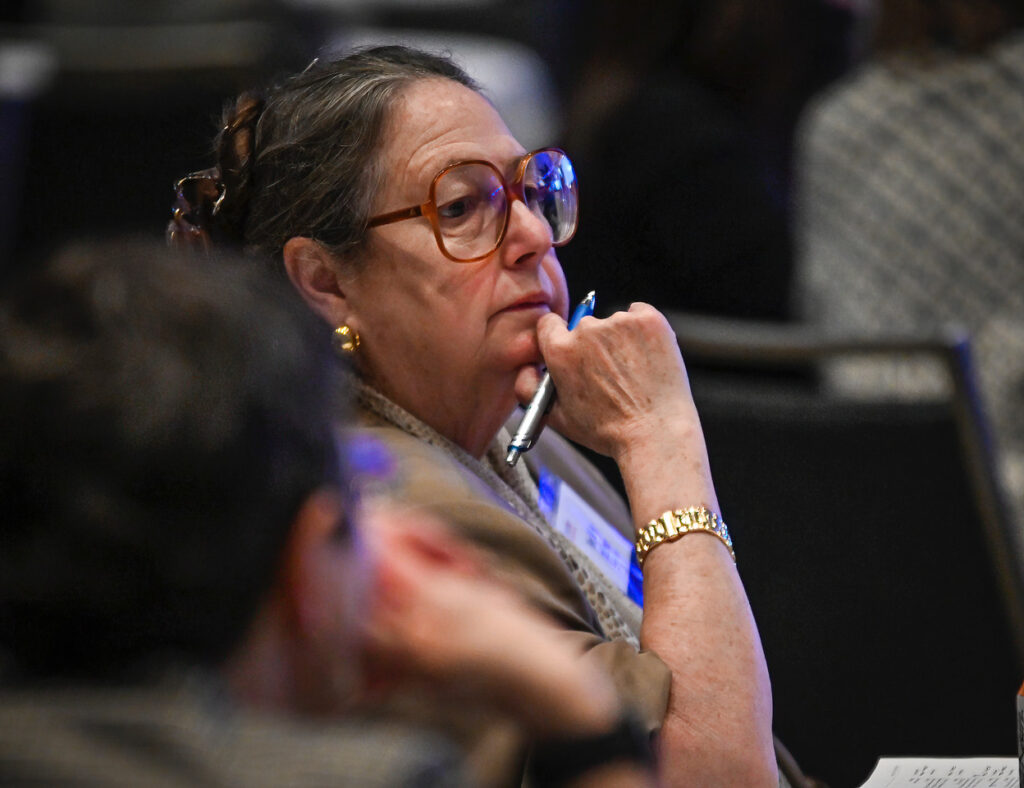 The 2024 campaign has begun for at least one item that may be on next year’s general election ballot: a constitutional amendment that would change the state’s primary election of 2026.
The 2024 campaign has begun for at least one item that may be on next year’s general election ballot: a constitutional amendment that would change the state’s primary election of 2026.
I saw the early shot in this campaign in my email in-box, in a missive from the group All Oregon Votes. The “Big endorsements for All Oregon Votes!” were significant enough to draw attention, including former legislator and gubernatorial candidate Betsy Johnson and the group Veterans for Political Innovation. Johnson’s comment was, “Damn near half the state’s voters are independents. They ought to have an equal voice in our democracy.”
The campaign’s web page leads with an arresting statistic. In last year’s primary election, the top two candidates for governor, Democrat Tina Kotek, now in the office, and Republican Christine Drazan, together won votes from just 12.3% of all the registered voters in the state. Of course, other competitors in the party primary won several percentage points more, but only about 30% of the voters were even involved in selecting those two nominees. Most registered voters were on the outside looking in as either non-aligned or members of other parties.
In many ways, Oregon, with its almost automatic voter registration and its vote by mail system, has some of the most open voting processes in the country. It is in the minority of states, however, that allow only Democrats to vote in Democratic primary elections and Republicans to vote in Republican primaries.
The proposed Petition 2024-16 would apply to all state and federal offices except president and vice president, and would allow all candidates to appear on the ballot “regardless of whether the candidate is or is not affiliated with a political party.” It would also and allow all voters – whether or not members of a party – to choose any single candidate for each office. That could mean, for example, voting in the primary for a Republican nominee for the U.S. House, for a Democratic nominee for governor and a non-aligned candidate for the Legislature.
It’s not an unprecedented approach. Washington state operated under a similar system for many years. But it would be a major change.
This cycle isn’t the first time the idea of changing this has come up. A similar proposal was offered in 2021 for the next election, but it came up short and never reached the ballot. Oregon for decades has had closed primaries, and neither major party has made any move toward changing that.
Might voters approve the idea next year?
The Betsy Johnson endorsement, along with some significant group endorsements early on – the deadline for submitting enough petition signatures isn’t until next summer – gives it a decent chance. Neither major party has expressed any interest in opening their primaries.
If they did, they might see some improvement with what has become a persistent problem for both: the need to appeal to the philosophical edges of their parties and away from the centers. Johnson’s gubernatorial campaign last year directly addressed that point, and although she wound up in a distant third place, the point about a lack of appeals to the center did hit home for quite a few voters.
Oregon also is one of the states with the largest portion of voters not a member of either party, and that portion is growing. All Oregon Votes points out that while just over a third of voters register as Democrats, and just under a quarter as Republicans, 41.7% register as something else – and so have no involvement in the critical phase of selecting party nominees. And that percentage has been growing.
Several states have seen significant debates over this. Idaho for decades allowed all voters in a primary election to choose any party’s ballot (but just one) for voting. In 2010 the state Republican Party decided to limit voting in its primary to people registered as Republican, and a federal court decision the next year held the party could impose the requirement. That rule has been the subject of contention since, even as a number of Republican activists have loudly complained about Democrats and non-aligned voters registering as Republicans to influence its primary results. (Analyses of votes have suggested those crossovers exist but their numbers are small.)
Those debates implicate the question of what a major political party is, whether simply private aggregations of voters or semi-public, though technically private, organizations that effectively control the channels of representative democracy. It may also raise the issue of how well the two major parties are representing the mass of Oregon voters.
If All Oregon Votes and its allies push their case more firmly this election cycle than in the last, the opportunity could align for a decision on that
Randy Stapilus has researched and written about Northwest politics and issues since 1976 for a long list of newspapers and other publications. This guest commentary first appeared in the Oregon Capital Chronicle, and may or may not reflect the views of The Corvallis Advocate, or its staff, supporters, advertisers, or management.
Do you have a story for The Advocate? Email editor@corvallisadvocate.com

